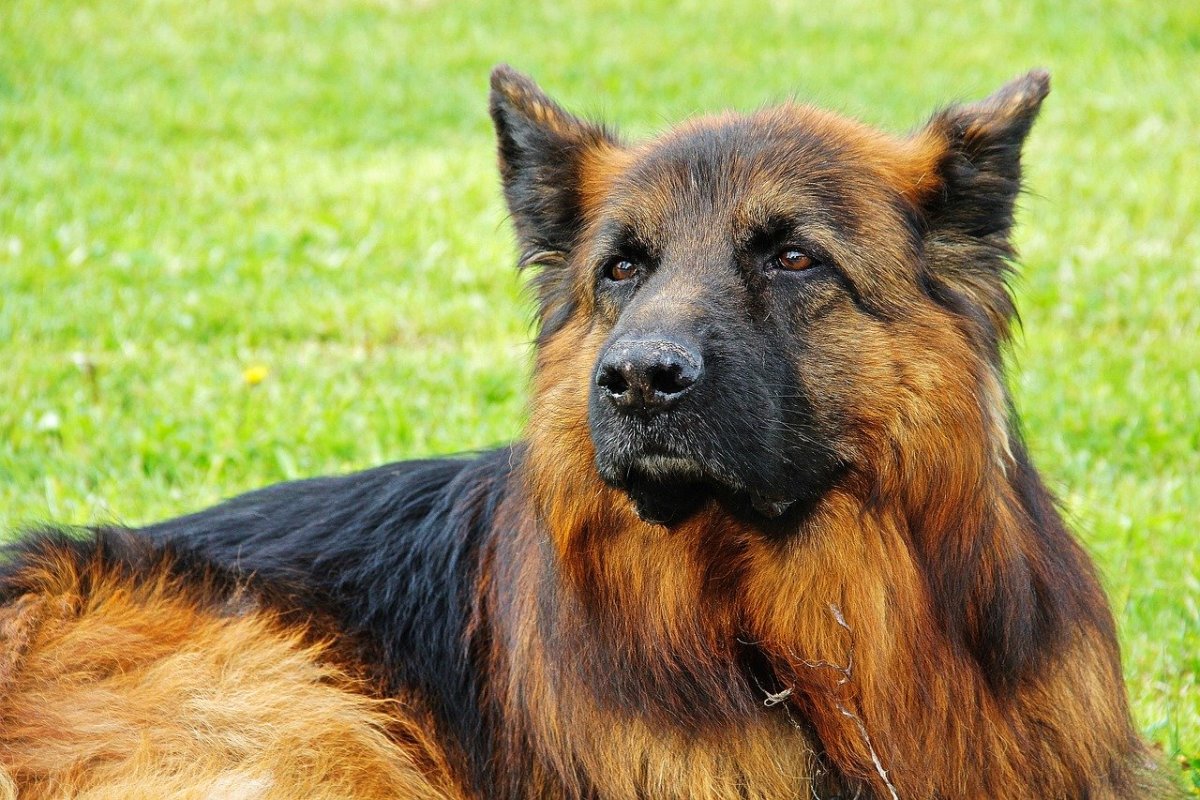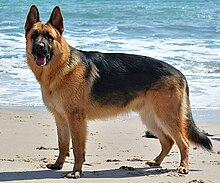Introduction:
German Shepherd Dogs (GSDs) stand as one of the most iconic and versatile breeds globally, celebrated for their intelligence, loyalty, and unwavering devotion to their owners. In this comprehensive guide, we embark on a journey into the world of German Shepherds, exploring their history, temperament, training, care needs, and more.

1. Origin and History:
Delve into the fascinating history of German Shepherd Dogs, tracing their roots back to 19th-century Germany, where they were originally bred for herding and guarding livestock. Explore the contributions of Captain Max von Stephanitz, the breed’s visionary founder, and how his efforts shaped the German Shepherd into the versatile working dog we know today.
2. Temperament and Personality:
Discover the distinctive temperament of German Shepherds, characterized by their intelligence, courage, and loyalty. Explore their innate drive to work and serve, making them invaluable partners in various roles, including police and military work, search and rescue missions, therapy and service dog duties, and cherished family companions.

3. Physical Characteristics:
Provide an in-depth look at the physical attributes of German Shepherds, including their strong and muscular build, iconic erect ears, and expressive almond-shaped eyes. Discuss the breed standard for coat colors and patterns, such as black and tan, sable, and solid black, as well as variations in coat length and texture.
4. Exercise and Training Needs:
Highlight the importance of physical exercise and mental stimulation for German Shepherds to channel their energy positively and maintain optimal health and well-being. Offer insights into effective training methods, emphasizing positive reinforcement techniques, early socialization, and ongoing mental enrichment to cultivate a well-balanced and well-behaved companion.

5. Health Considerations:
Address common health issues and genetic predispositions in German Shepherds, including hip and elbow dysplasia, degenerative myelopathy, and certain skin conditions. Provide guidance on preventive care, such as regular veterinary check-ups, a nutritious diet, appropriate exercise, and proactive management of potential health risks.

6. Living with a German Shepherd:
Offer practical advice for prospective and current German Shepherd owners on creating a nurturing and enriching environment for their canine companions. Discuss considerations for housing, exercise routines, mental stimulation, and socialization, as well as strategies for addressing behavioral challenges and fostering a strong bond with their GSD.
7. Famous German Shepherds:
Celebrate the legacy of notable German Shepherds who have left their mark on history, from Rin Tin Tin, the canine film star, to service dogs who have bravely served alongside soldiers, law enforcement officers, and first responders around the world. Highlight their remarkable achievements and enduring impact on society.
8. Conclusion:
Summarize the enduring appeal of German Shepherd Dogs as versatile working dogs, loyal companions, and beloved members of the family. Encourage readers to embark on their own journey with this exceptional breed, embracing the rewards of companionship, loyalty, and shared adventures that come with welcoming a German Shepherd into their lives.
FAQ’s:
1. What is a German Shepherd Dog?
German Shepherd Dogs, often abbreviated as GSDs, are medium to large-sized dogs known for their intelligence, loyalty, and versatility. Originally bred in Germany for herding and guarding purposes, they have since become popular as working dogs, family pets, and service animals worldwide.
2. What are the distinguishing characteristics of German Shepherds?
German Shepherds are known for their strong and muscular build, erect ears, and intelligent expression. They typically have a double coat, with a dense outer coat and a softer undercoat. Common coat colors include black and tan, sable, and solid black.
3. What is the temperament of German Shepherds?
German Shepherds are known for their intelligence, loyalty, and protective instincts. They are often described as confident, courageous, and aloof with strangers, but affectionate and devoted to their families. Early socialization and training are essential to ensure they develop into well-rounded companions.
4. Are German Shepherds good with children and other pets?
When properly socialized and trained, German Shepherds can be excellent companions for children and get along well with other pets in the household. Their natural protective instincts may make them vigilant around unfamiliar people or animals, so early socialization is crucial.
5. How much exercise do German Shepherds need?
German Shepherds are active and energetic dogs that require regular exercise to stay healthy and happy. They thrive on physical activity and mental stimulation and typically benefit from at least one to two hours of exercise each day, including walks, runs, playtime, and training sessions.





